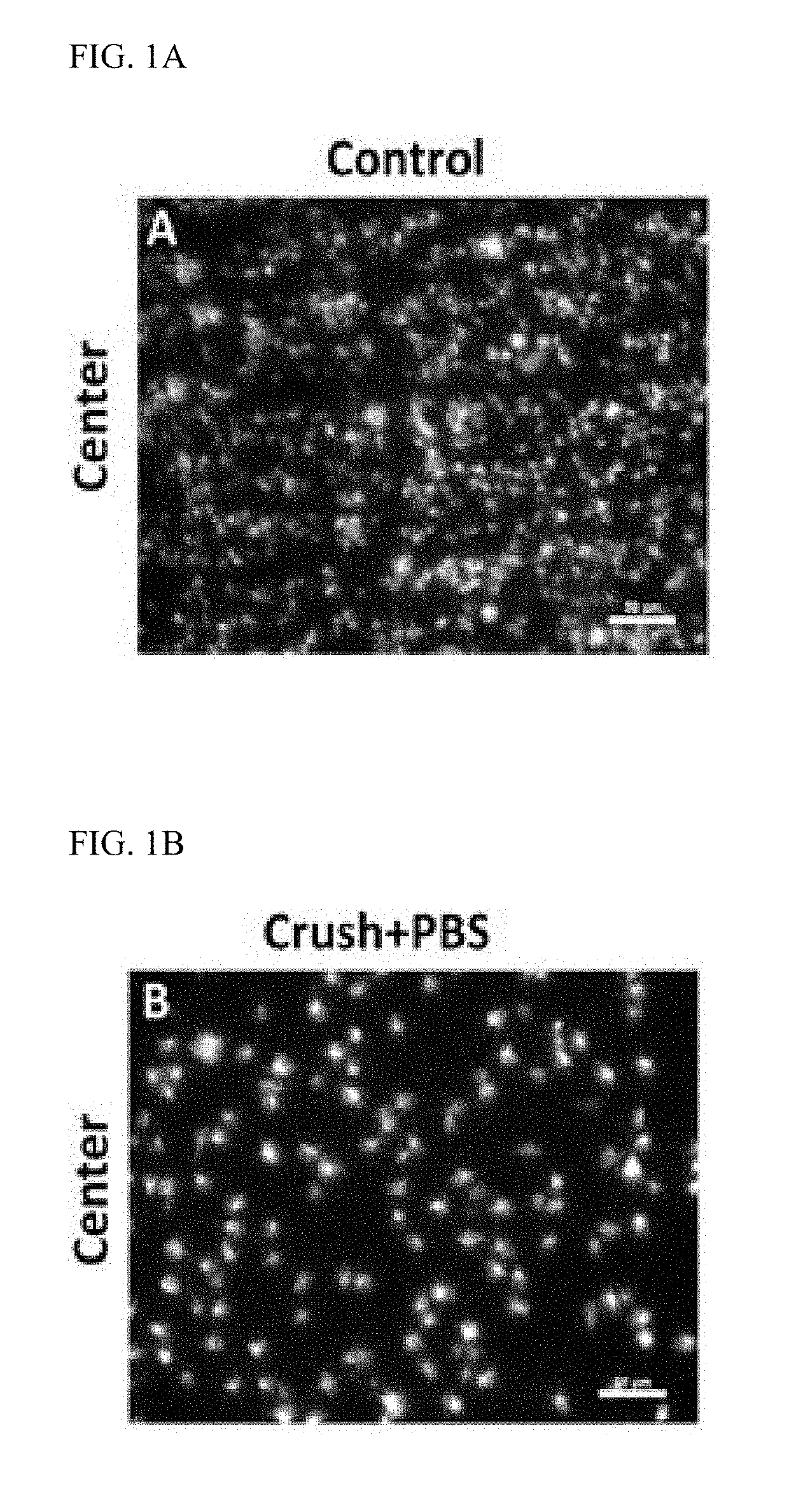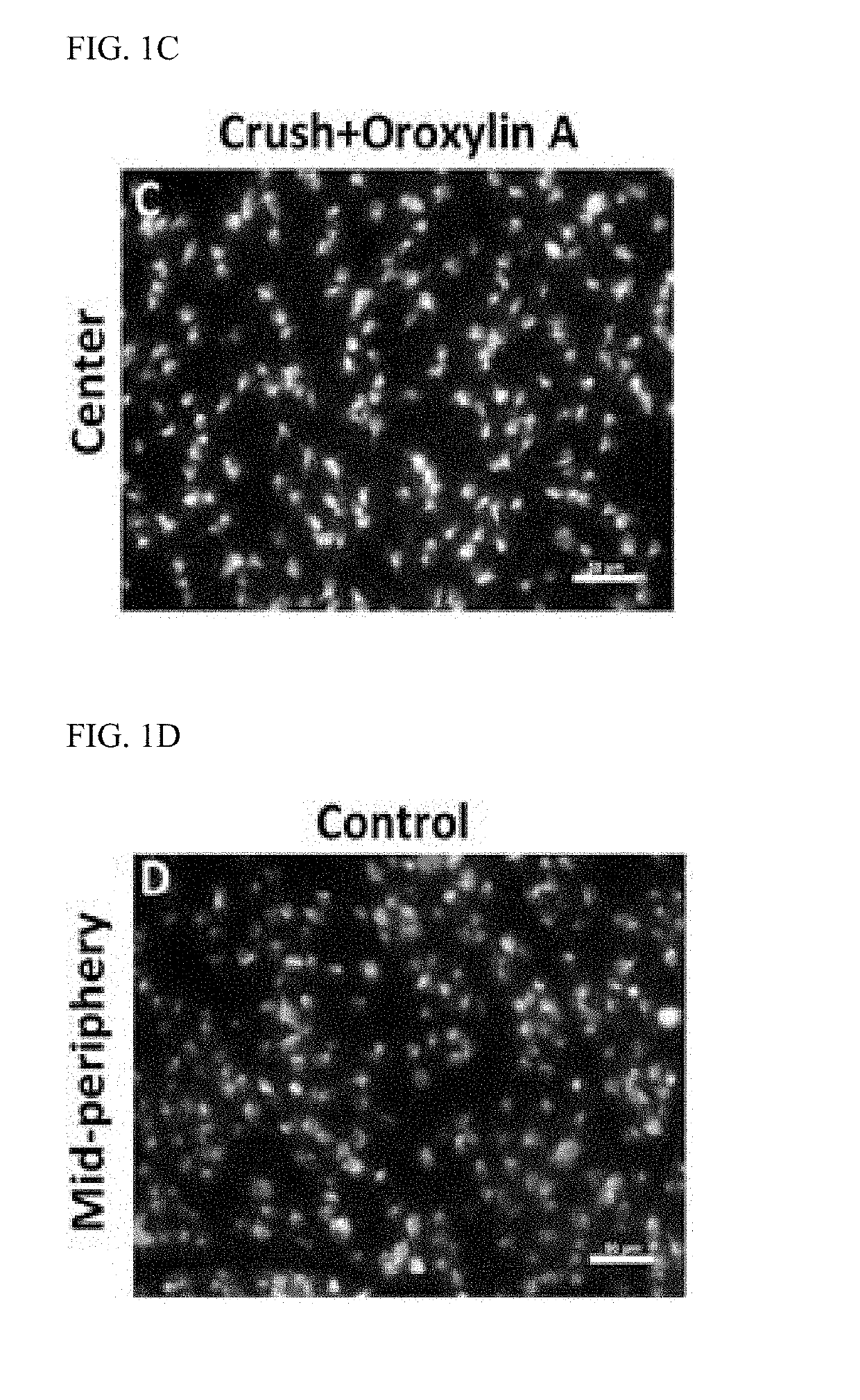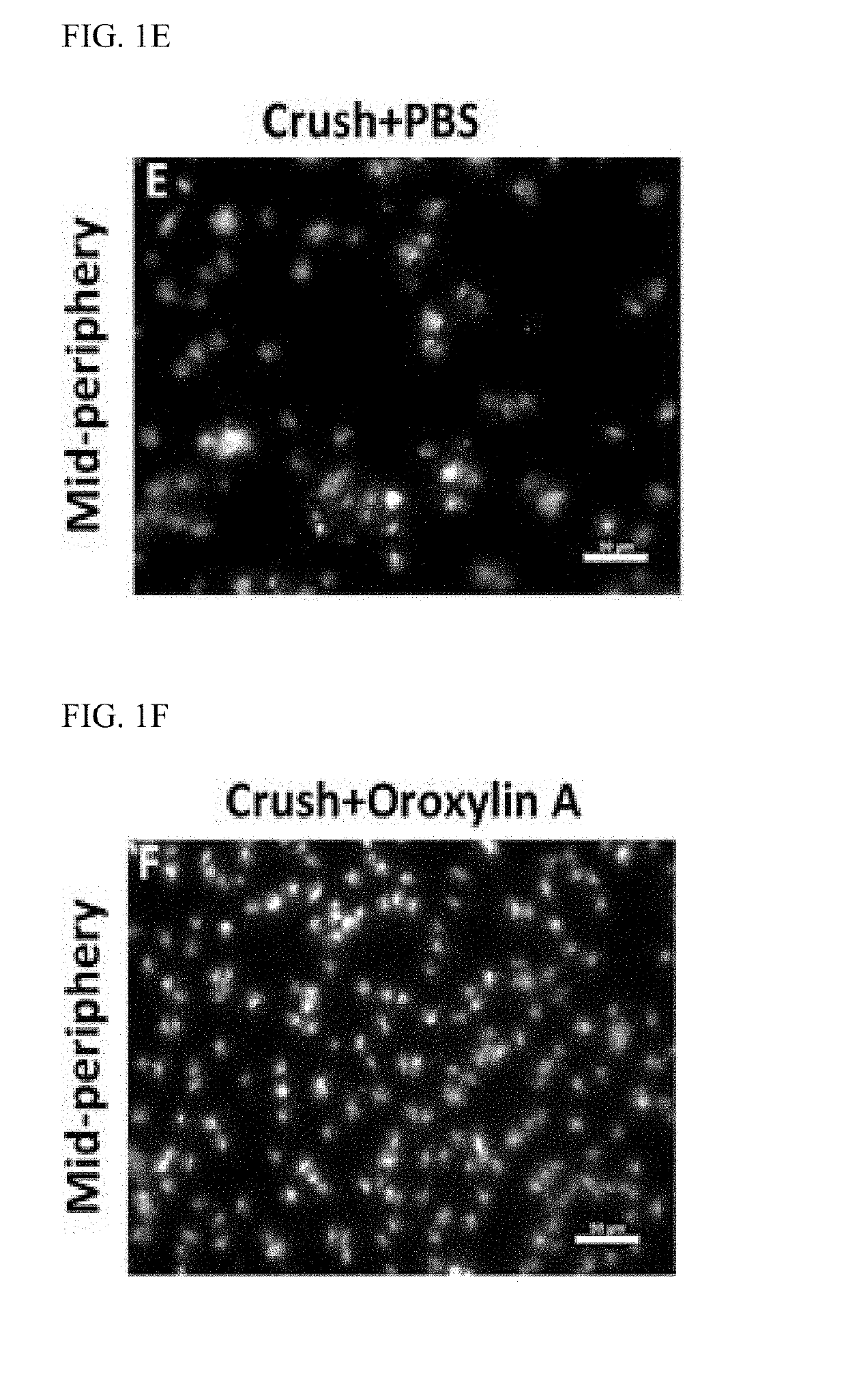Method of treating, reducing, preventing deterioration or improving visual function after optic neuropathy
- Summary
- Abstract
- Description
- Claims
- Application Information
AI Technical Summary
Benefits of technology
Problems solved by technology
Method used
Image
Examples
example 1
[0062]Oroxylin A Administration Enhanced RGC Survival Following ON Crush
[0063]In order to evaluate the effect of oroxylin A on RGC survival after crush injury to the optic nerve, morphometric analysis of retrograde labeled RGCs of the rat retina in sham-operated group, crushed with PBS-treated group and crushed with oroxylin A-treated group were performed. The densities of RGCs in the central and mid-peripheral retina in the sham-operated eyes were 2577±383 / mm2 and 1550±325 / mm2, respectively. Two weeks after ON crush, the densities of RGCs in the central retina of the oroxylin A-treated group and PBS-treated group were 1352±476 / mm2 (52.5% survival) and 510±158 / mm2 (19.8% survival) respectively, and in mid-peripheral retina were 960±465 / mm2 (61.9% survival) and 439±139 / mm2 (28.3% survival) respectively (FIG. 1A, FIG. 1B, FIG. 1C, FIG. 1D, FIG. 1E, FIG. 1F). There were significant differences in RGC densities in the oroxylin A-treated groups in both central and peripheral retinas comp...
example 2
[0065]Improvement in P1 Amplitude in the Oroxylin A-Treated Group
[0066]To assess the visual function, the changes of P1 latency in FVEP two weeks after ON crush were evaluated. In the sham group, the latency of P1 wave was 85±15 ms. In the PBS-treated group, the latency of the P1 delayed to 154±31 ms. The latency of the P1 wave was 100±12 ms in the oroxylin A-treated group (FIG. 3A, FIG. 3B). The latency of P1 wave was more significantly delayed in the PBS-treated group than in the oroxylin A-treated group (n=6 in each group, p<0.05) The FVEP results demonstrate that the oroxylin A-treated group had significantly preserved visual function as compared to the PBS-treated group at 2 weeks after ON crush.
example 3
[0067]Decreased Number of TUNEL Positive Cells in the RGC Layer of Oroxylin A-Treated Retinas
[0068]TUNEL assay demonstrated that TUNEL positive cells / HPF (high powered field) was 1.2±0.9 cells in the sham-operated rats, 11.0±3.5 positive cells / HPF in the PBS-treated group (p<0.001 vs sham group) and 4.0±2.4 positive cells / HPG in the oroxylin A-treated rats (p<0.05 vs. PBS-treated group) in the RGC layer (FIG. 4A, FIG. 4B). As shown in FIG. 3, TUNEL-positive cell numbers were markedly increased in the RGC layer in the PBS-treated group and oroxylin A reduced the number of TUNEL positive cells, demonstrating that administration of oroxylin A had a significant anti-apoptotic effect on RGCs after ON crush.
PUM
 Login to view more
Login to view more Abstract
Description
Claims
Application Information
 Login to view more
Login to view more - R&D Engineer
- R&D Manager
- IP Professional
- Industry Leading Data Capabilities
- Powerful AI technology
- Patent DNA Extraction
Browse by: Latest US Patents, China's latest patents, Technical Efficacy Thesaurus, Application Domain, Technology Topic.
© 2024 PatSnap. All rights reserved.Legal|Privacy policy|Modern Slavery Act Transparency Statement|Sitemap



